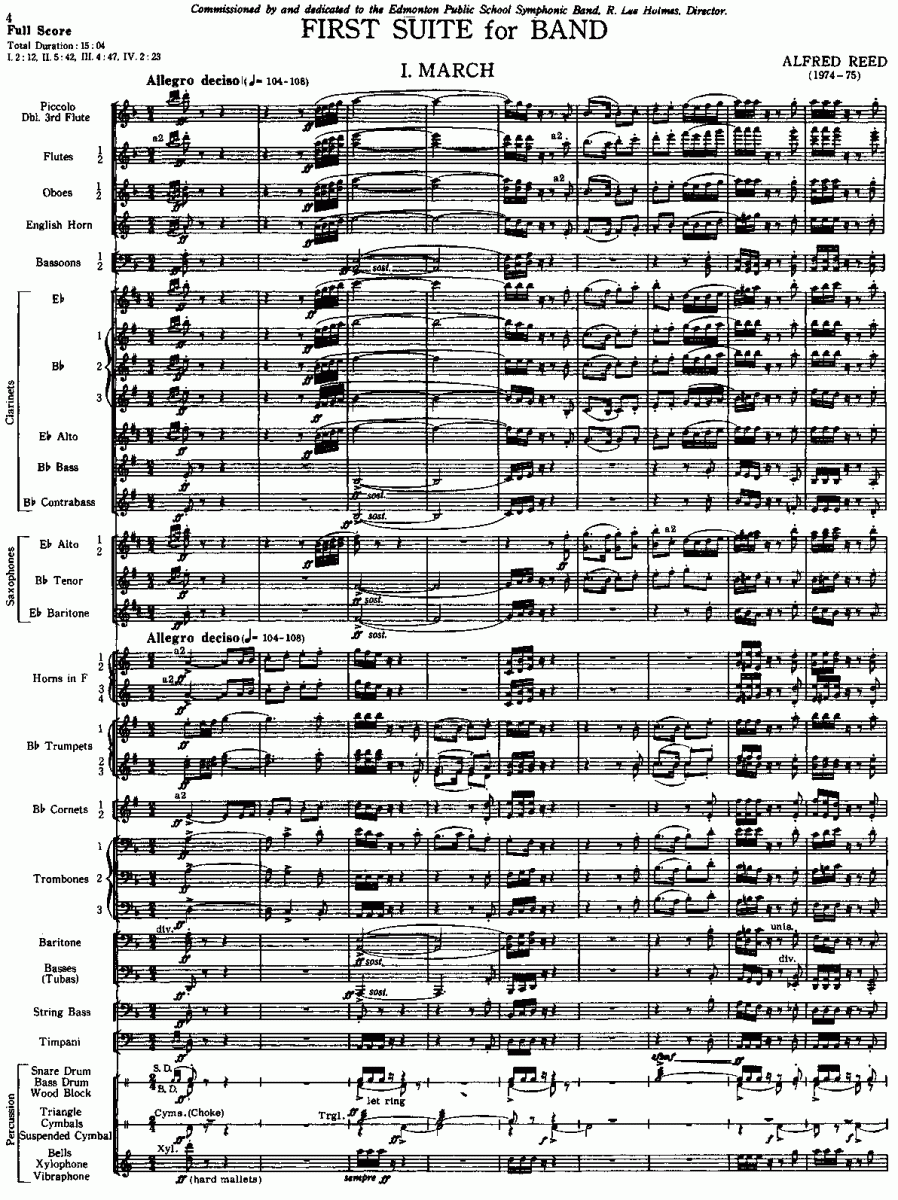Alfred Reed First Suite For Band Pdfs
Best Pua Routines Pdf Viewer there. The 'Second Suite for Band' was commissioned by the Sterling, Illinois, High School Wind Ensemble, G. Jack Schuler, Director, in memory of Ina R. The first performace took place on March 29, 1979, with the Sterling group, under the direction of the composer. The 'Second Suite for Band' consists of four movements, each one based on a characteristic song, march or dance form usually associated with either a single Latin-American country or group of countries. The first movement 'Son Montuno', is based on a rhythm closely associated with the calypso, and seems to have had its origin in Cuba or the nearby Caribbean countries. Its basic 2-beat rhythm is performed lightly, and its melodies are also light, vivacious and delicate in character.


NoN o rth Cobb High School rt h C o b b H i g h S c h o o l Wind SymphonyWi n d S y m p h o n y GMEA In. First Suite for Band Alfred Reed IV.
The second movement 'Tango' is based not on the dramatic, highly charged Argentinian version which has become so familiar to us, but on the less frequently heard Brazilian interpretation, wich is slower, smoother, and dreamier, rather than forthright and dramatic. Spencer 1860 Carbine Serial Numbers there. Although they are both basically 4-beat rhyms, the beats in the Brazilian version are played almost in a gliding fashion rather than in the emphatic manner of the Argentinian. The third movement 'Guaracha' is a rollicking Artentinian drinking song, in effect a little scherzo, that bounces along its insouciant way to contrast with the preceding 'Tango' and the succeeding 'Paso Doble'. The fourth movement 'Paso Doble' is built on rhythms associated either wih a dance or march, and is Mexican in origin (although the term is also found in Spain, from where, presumably, it was brought to Mexico). Despite its name, which, literally translated, means 'two-step', we find paso dobles written in both duple and triple time, either for dancing or marching. The present version combines these two basic patterns into quintuple meter (5/4) in a brilliant march to the bull ring on a festival day, ending with one of those typical long Spanish melodic lines in triple time that suggest both a dance and a march. Son Montuno 2.
Tango (Saragossa Serenade) 3. Paso doble (A la Corrida!).